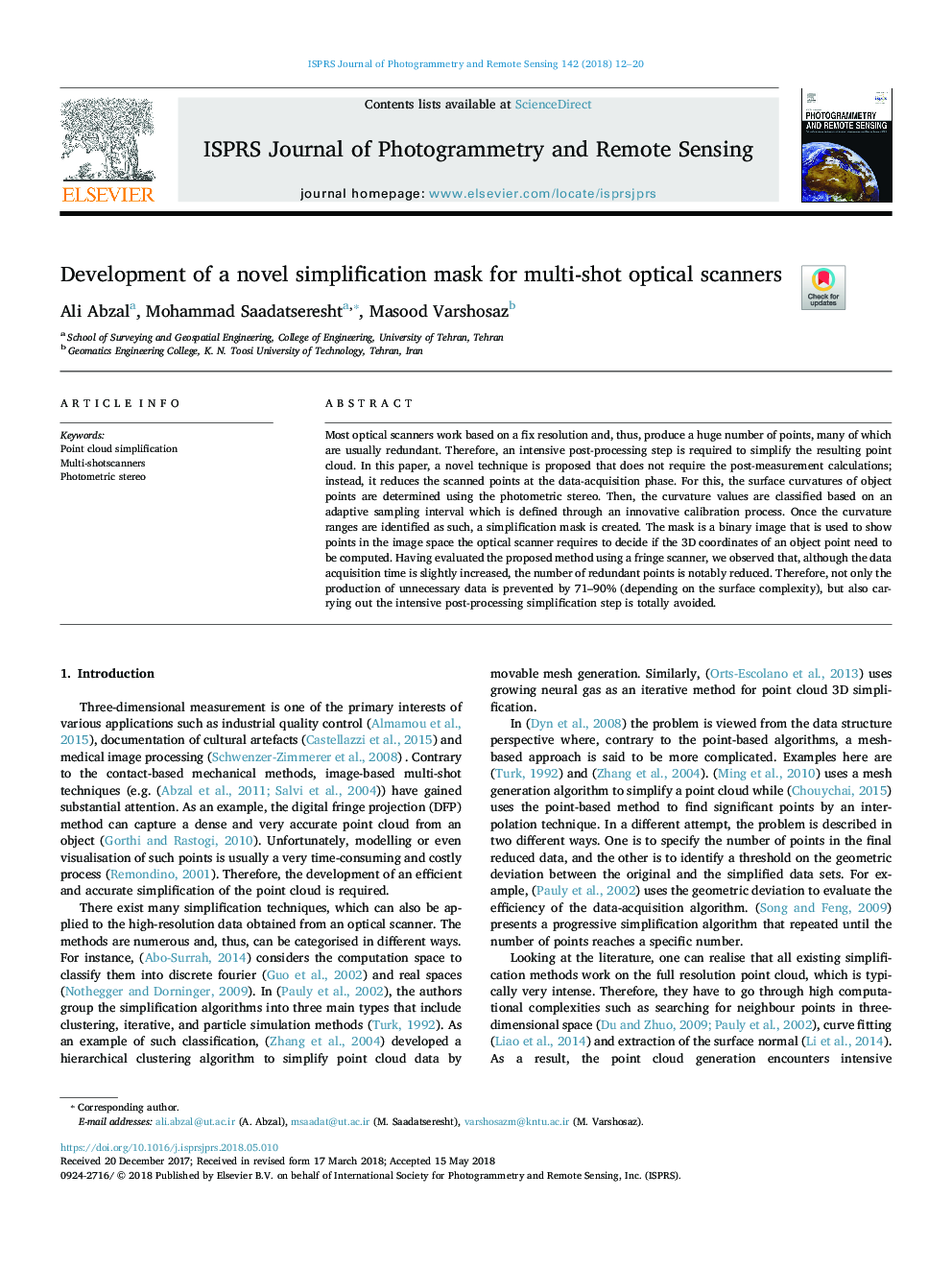| Article ID | Journal | Published Year | Pages | File Type |
|---|---|---|---|---|
| 6949071 | ISPRS Journal of Photogrammetry and Remote Sensing | 2018 | 9 Pages |
Abstract
Most optical scanners work based on a fix resolution and, thus, produce a huge number of points, many of which are usually redundant. Therefore, an intensive post-processing step is required to simplify the resulting point cloud. In this paper, a novel technique is proposed that does not require the post-measurement calculations; instead, it reduces the scanned points at the data-acquisition phase. For this, the surface curvatures of object points are determined using the photometric stereo. Then, the curvature values are classified based on an adaptive sampling interval which is defined through an innovative calibration process. Once the curvature ranges are identified as such, a simplification mask is created. The mask is a binary image that is used to show points in the image space the optical scanner requires to decide if the 3D coordinates of an object point need to be computed. Having evaluated the proposed method using a fringe scanner, we observed that, although the data acquisition time is slightly increased, the number of redundant points is notably reduced. Therefore, not only the production of unnecessary data is prevented by 71-90% (depending on the surface complexity), but also carrying out the intensive post-processing simplification step is totally avoided.
Keywords
Related Topics
Physical Sciences and Engineering
Computer Science
Information Systems
Authors
Ali Abzal, Mohammad Saadatseresht, Masood Varshosaz,
